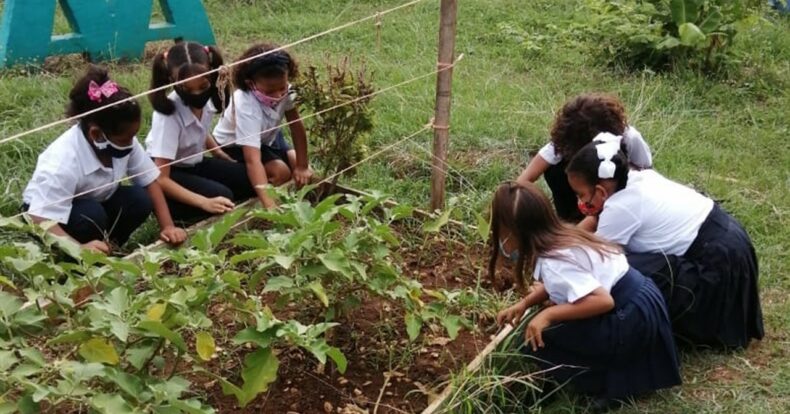The Role of Community Farms in Costa Rica During the Pandemic

In the middle of the rainforest in Costa Rica it’s easy to forget what is happening in the rest of the world. However, taking a few minutes to reflect on how Costa Ricans have so far survived this pandemic is a worthwhile lesson.
The Ticos as Costa Rican citizens call themselves fall broadly into two different categories; those who work for the government or one of the many government institutions and those who do not. This reality has basically created an environment of permanent conflict and a general disinterest by the population in what the central government ultimately does. The consensus is that the government and government institutions are corrupt, have always been corrupt and nothing will ever change.
March 2020, Covid-19 produced a series of unexpected results. The government instituted restrictions and the economy basically shut down overnight. Those who did not work for government institutions were legally told to go home without pay by their employers while government employees whether they worked or not continued to receive their full pay and benefits.
In almost any developed country this scenario would have led to widespread protests and perhaps worse. In Costa Rica however most Ticos took everything in stride and aside from some light demonstrations they resigned themselves to this is the way it is and has always been. Some people genuinely suffered, but after the initial panic a new sense of purpose and resilience was evident. People began balancing their situation and started a multitude of small endeavors to maintain some sort of normalcy.
Real anxiety spread among private businesses and homeowners. They feared that the masses, faced with no salaries and little savings would pose a security threat to businesses and the return to normal. Many well intentioned privately funded initiatives were created and one such initiative by the University for International Cooperation (UCI) called Costa Rica Regenerativa (CRR) has become one of the leading examples of privately funded redevelopment initiatives.
Costa Rica Regenerativa came into being in 2019 as a result of a multinational and multidisciplinary reunion organized by Dr. Eduard Muller (founder of UCI) in Rancho Margot. Before the pandemic the emphasis was initially to teach regenerative practices to sequester carbon in the soil using Allan Savory holistic animal/pasture management system. However the arrival of Covid-19 created another immediate need for Costa Rica Regenerative and it became evident that it had to widen its scope. The abrupt end of tourism created the potential for a large-scale catastrophe that many well intentioned private individuals were intent to stop.
“These fragile populations who initially were thought to be the weak link in the recovery were largely able to feed and provide for themselves”
In the short-term CRR organized and carried out food distribution to families in need and to date over 27,000 food baskets have been distributed in Guanacaste. Simultaneously, over 200 family farm plots and three community food farms were created and now a further initiative is underway with the technical schools in the Nicoya peninsula to develop chemical free agriculture in the school vast gardens.
The pandemic is certainly not over and suffering will certainly continue for many. However there is a good side to all of this. These fragile populations who ere initially thought to be the weak link in the recovery were largely able to feed and provide for themselves and although the Ticos are fiercely independent, when the chips are down they help each other by sharing whatever they have.
Nothing is perfect, but it’s all Pura Vida.
FACTS TO REMEMBER
- In almost any developed country this scenario would have led to widespread protests and perhaps worse. In Costa Rica however most Ticos took everything in stride and aside from some light demonstrations they resigned themselves to this is the way it is and has always been.
- The arrival of Covid-19 created another immediate need for Costa Rica Regenerative and it became evident that it had to widen its scope.
- In the short-term CRR organized and carried out food distribution to families in need and to date over 27,000 food baskets have been distributed in Guanacaste. Simultaeously, over 200 family farm plots and three community food farms were created
Juan Sostheim
Rancho Margot
Navigate articles





